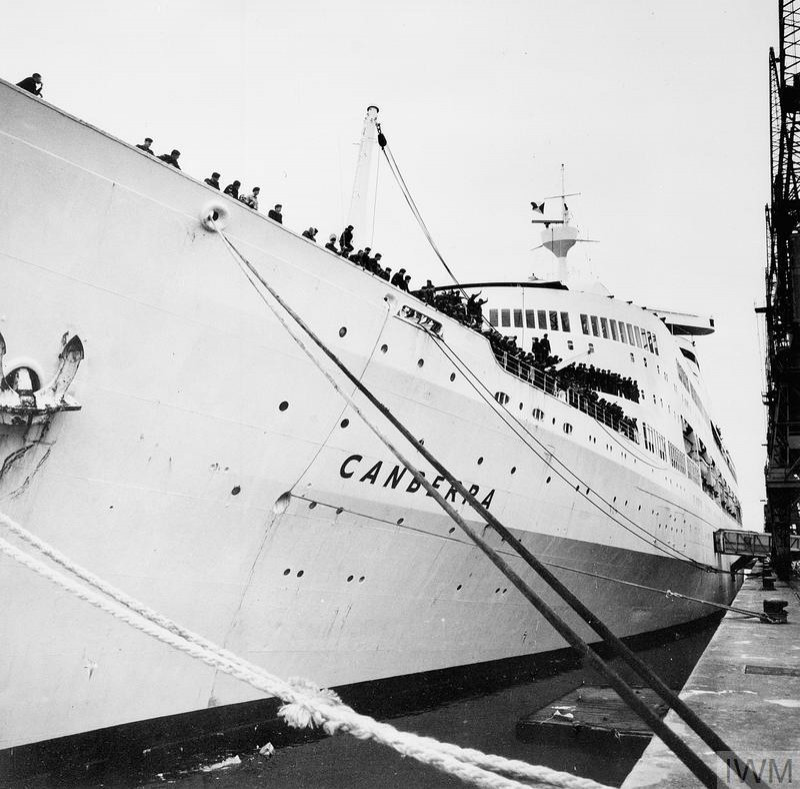Two very different white cruise ships joined Operation Corporate on Friday 9 April, which in 1982 was Good Friday.
All eyes were on Southampton as P&O ocean liner SS Canberra steamed out into the Solent carrying 3,000 ‘passengers’ – Royal Marines from 3 Commando Brigade and troops of 3 Parachute Regiment.
The liner was accompanied by the ro-ro ship Elk, which carried vehicles and ammunition.
She had been cruising in the Mediterranean when Argentina invaded the Falklands, at which point her Master received a signal asking him to put in at Gibraltar. He was then informed that the liner had been requisitioned, as the Naval Service had nowhere near the capacity to transport large numbers of troops to the Falklands.
The liner dropped off her passengers in Southampton, then underwent a rapid conversion to troop carrier, with Vosper Thornycroft playing a leading role in the conversion work.
Within three days the ship was ready to sail, and left Hampshire on passage south.
Known as the Great White Whale because of her colour and size, the 45,000-ton Canberra was to be in the thick of the action during the campaign.
Meanwhile, out in the Mediterranean, another P&O ship was also being dragged into the conflict thousands of miles away.
The 17,000-ton veteran SS Uganda – she was 30 years old in 1982 – was on an educational cruise in early April, and more than 1,000 passengers, many of them schoolchildren and their teachers, had just enjoyed a glimpse of Egypt.
No doubt pleased to be back on board after the heat and dust of visiting the pyramids, the school parties were anticipating their next stop in Antalya in Turkey – but they never reached it.
Instead, on 9 April, Uganda was diverted to Naples where her passengers were disembarked in under an hour, and their place taken by parties of workers.
They started a remarkable conversion job on the steamship as she headed west to Gibraltar, which eventually resulted in Uganda sailing south as a hospital ship a week later.
On 9 April both the main Carrier Battle Group and the Amphibious Group were at sea making steady progress south, and the time was being put to good use as all available intelligence – including that gained by former members of NP 8901 while on duty in the Falklands and while pursuing their own interests, such as sailing the rugged coasts of the many islands that make up the Falklands – was used to plan the defeat of the invaders.
* These posts can only give a brief sense of what was a complex and fast-moving situation 40 years ago, and cannot cover the involvement of every ship, squadron and unit in detail – for a much more comprehensive account see naval-history.net at https://www.naval-history.net/NAVAL1982FALKLANDS.htm
Our image today from the Imperial War Museum collection (© IWM FKD 371) shows Royal Marines of 40 Cdo, part of 3 Cdo Brigade, lining the side of P&O liner SS Canberra as she prepares to sail from Southampton
